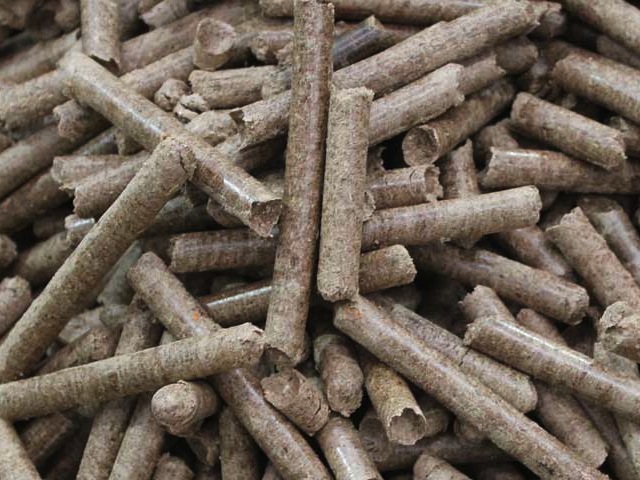Wood is the new king of renewables in Europe, but how renewable is it?

Finger-sized wood pellets made from plant material, mostly wood. Converted UK power plants will not use any other fuel. PHOTO biomass-energy.org
The Europeans are the undisputed leaders in global action to reel in carbon emissions, working hard to drive down their own emissions while devising creative, cost-effective ideas for global action.
We should all admire their resourcefulness, focus and genuine achievement in making climate action a goal for all. But that doesn’t mean we should accept without question everything they do.
On the basis of phasing out fossil carbon, European electricity generators have turned to a traditional fuel: plant material that would otherwise have been waste, including woody forest residue left over from logging operations. At least, that was the plan.
Business interests are converting coal power stations into wood-burners, hastening the slow demise of coal. The process is driven largely by government subsidies to help the conversion and generous carbon credits to ensure they’re profitable. So far, so good.
Scandinavian countries have long generated electricity from biomass, mainly wood with which they’re richly endowed. From the 1990s eastern European countries, notably Poland and the Baltic states, have been developing wood-fired power.
In recent years five key EU countries have joined them by converting coal plants to burn biomass: the United Kingdom, France, Germany, Belgium and the Netherlands. The process isn’t without controversy.
Coal miners (who know a lot about subsidies) object to governments bringing the price of wood fuel down below that of coal, oil and gas. As they point out, wood when burned emits about 20 per cent more carbon dioxide than coal.
Defenders of wood power respond that unlike coal, which was laid down over millions of years, wood is renewable because new trees can grow in their place and recover all the carbon lost in the generator furnace. And they have the 1997 Kyoto Protocol to back them up.
But in putting wood-fired electricity on the same footing as wind, solar and similar renewable sources, the Kyoto Protocol makes two hugely significant carbon accounting errors. It pretends that no carbon is emitted in harvesting, transporting and processing wood (obviously wrong) and that like wind and solar power, wood is instantaneously renewable. It actually takes decades or centuries for the carbon lost in burning wood to be recovered by replacement trees.
All wood-fired energy measures and policies since Kyoto have ignored this basic knowledge. Backed by international protocols, biomass is now listed as Europe’s largest renewable energy source. Advocates elsewhere, including Australia, expect similar privileged treatment.
Last October, a detailed investigation by the US-based online journal Climate Central described a disturbing new aspect to the wood-power story: the export, mainly from North America, of millions of tonnes of pelletised wood each year for the furnaces of Europe, Korea and Japan.
Despite biomass energy’s claim to be dealing with waste, the pellets required by the converted furnaces use no waste at all. They come from harvesting operations, mainly in the US, whose sole or main purpose is biomass energy, Climate Central’s John Upton reported.
Power plants demand steady supply. “You just can’t build a significant energy sector from picking up the slash from a cyclical lumber industry,” a US forest scientist told Upton. Hence the special-purpose harvesting.
Last year when Australia’s government added biomass energy to the Renewable Energy Target, it stipulated that biomass fuel can only be a by-product of operations whose primary purpose is not energy production.
However, it’s not hard to see something like the situation in the US wood-pellet export market happening here. A harvest whose primary purpose is sawlog could still produce a greater volume of woodchips, all of which, in a depressed export market, could end up in a furnace.
There would seem to be value in using forest residue for producing electricity instead of burning it on the forest floor, though I fail to see how we can prevent energy generation, with its relentless demand for fuel, eventually becoming a primary driver of harvesting.
But the bottom line is emissions. We must discard the myth that wood is an emissions-free energy source, and insist that those emissions are accounted for in full, without any free Kyoto passes.
